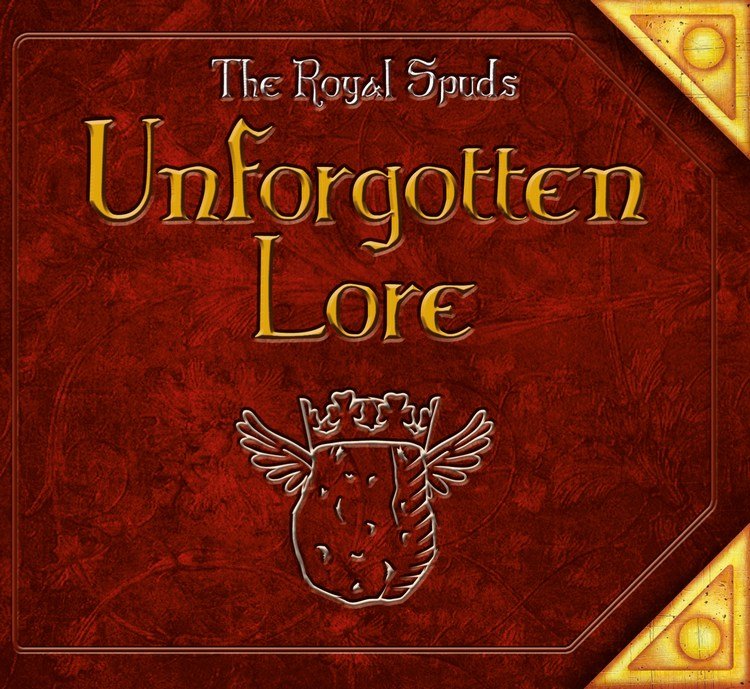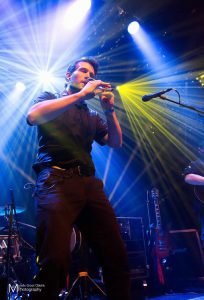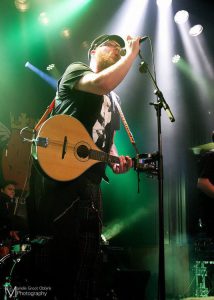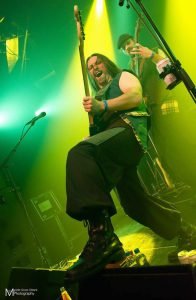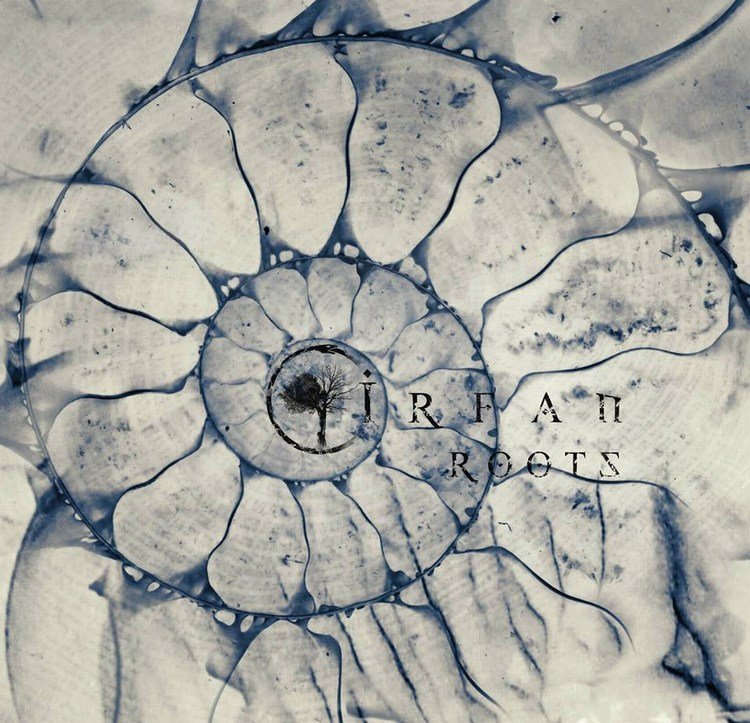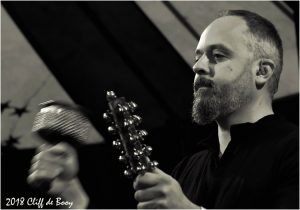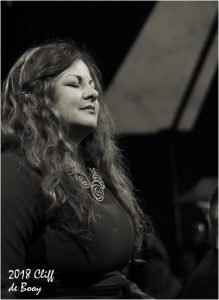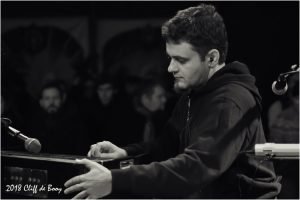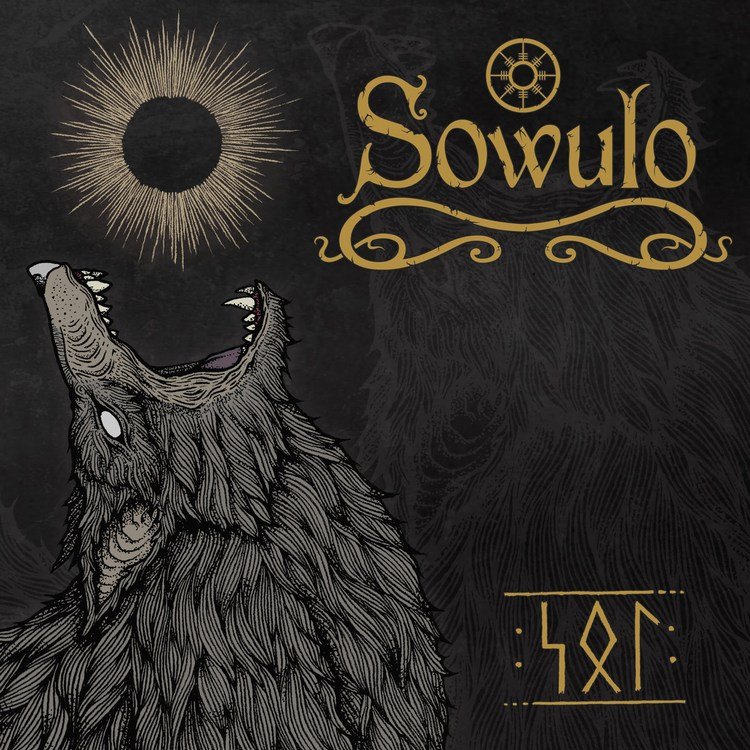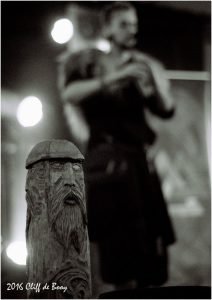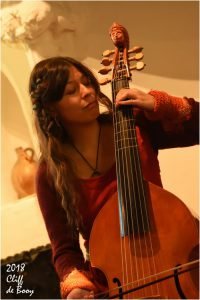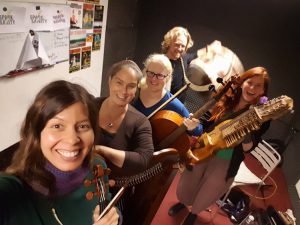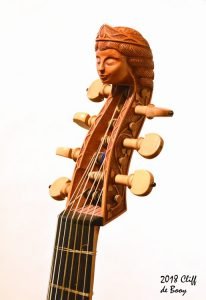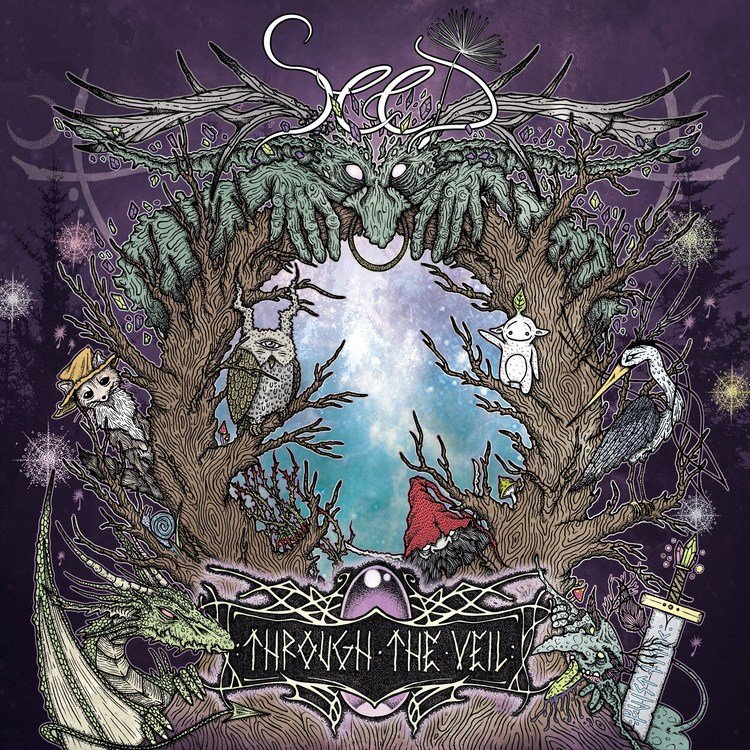
Well, I tried. I really tried… I tried to make a impartial, objective review of the New SeeD album Through The Veil and I couldn’t. It didn’t work. Why?
Since 2015 I have been following SeeD and I just love them. I love the positive, cheerful energy they spread on stage. I love their ‘outside of the box’ thinking. Recording your debut CD in a forest? Why not! Energy breakdown on a Spanish Festival??? Just step off the podium and build the biggest party ever I front of it! (see picture on the right) Swapping instruments and play a song like that ‘life on air’ during a CeltCast interview? Sure we dare to do that!
I love to see their friendship on stage and I love the way they interact with the crowd, with the fans. Ánd I LOVE their music!! I’s so cheerful and positive. It gives you a smile the minute you hear it. And after all that, they recorded Through The Veil together with my favourite sound ‘artist’ Fieke van den Hurk, at the Dearworld studio. I give up. I’m biased. Big time!
 After the intro -with impressive singing from Sara- the first notes of the title song Through The Veil take you into the magical realm of the fae, the gnomes, the goblins and seedlings. Just as Portal To Elfland before it, the CD is a nice mixture between instrumental songs and vocals. With a big role for Koen van Egmond on solo flute. He, in my opinion, is one of the best solo flutists in the scene. Having the ability to tell a whole story with only his flute. Just listen to the titel song Through The Veil, Seedling, or FFuya and you’ll know what I mean. As a band SeeD epitomize the spirit of the pagan folk scene. Their approach to music is free spirited, sometimes a bit unconventional, but always pure from their hearts. It says enough that the band sees friendship as the main force behind their music. In a way SeeD reminds me of the way music was made in the 60’s at the height of the flower power. It has that same sense of freedom, that same feel of love and that same captivating happiness running though it.
After the intro -with impressive singing from Sara- the first notes of the title song Through The Veil take you into the magical realm of the fae, the gnomes, the goblins and seedlings. Just as Portal To Elfland before it, the CD is a nice mixture between instrumental songs and vocals. With a big role for Koen van Egmond on solo flute. He, in my opinion, is one of the best solo flutists in the scene. Having the ability to tell a whole story with only his flute. Just listen to the titel song Through The Veil, Seedling, or FFuya and you’ll know what I mean. As a band SeeD epitomize the spirit of the pagan folk scene. Their approach to music is free spirited, sometimes a bit unconventional, but always pure from their hearts. It says enough that the band sees friendship as the main force behind their music. In a way SeeD reminds me of the way music was made in the 60’s at the height of the flower power. It has that same sense of freedom, that same feel of love and that same captivating happiness running though it.
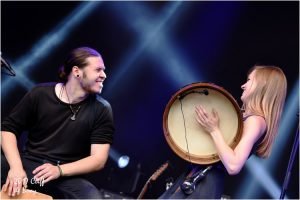 For those who don’t know SeeD yet, they play pagan folk using Flute, percussion, bouzouki and slidgeridoo as their main instruments. The lyrics are musical fairy tales. Telling the stories of gnomes, goblins, seedlings and all the other creatures that life in the magical world of SeeD. Just as a proper fairy tale is a bit gruesome and has some life lessons hidden in it, SeeD is not afraid to pack a serious message in their stories as well. De Gnoom, De Heks En De Boom -sung in Dutch- or Thorny Vines are good examples of that. Giving the band’s lyrics an extra quality. As mentioned Through The Veil is recorded in the Dearworld studio with Fieke van den Hurk at the controls. She managed to give the CD an open, crisp and fresh sound. Almost as if it was recorded life in one take. Something that works well with SeeD’s style of music.
For those who don’t know SeeD yet, they play pagan folk using Flute, percussion, bouzouki and slidgeridoo as their main instruments. The lyrics are musical fairy tales. Telling the stories of gnomes, goblins, seedlings and all the other creatures that life in the magical world of SeeD. Just as a proper fairy tale is a bit gruesome and has some life lessons hidden in it, SeeD is not afraid to pack a serious message in their stories as well. De Gnoom, De Heks En De Boom -sung in Dutch- or Thorny Vines are good examples of that. Giving the band’s lyrics an extra quality. As mentioned Through The Veil is recorded in the Dearworld studio with Fieke van den Hurk at the controls. She managed to give the CD an open, crisp and fresh sound. Almost as if it was recorded life in one take. Something that works well with SeeD’s style of music.All the songs on the CD are lovely, but The Heron deserves a special mentioning. The heron -the bird that is- is Koen’s totem animal. And in this song he honours her. The song itself is an earworm that you really can’t get ride of, and features some stunning flute improvisation from Koen in the middle of the song. Making it one of my highlights on the CD, actually one of the best instrumental pagan folk songs I’ve heared. Stunning.
Another highlight is Lullaby. A love song that shows how much Koen has grown as a singer in the last years, performing on stage. His voice and Sara’s blend beautifully. And it is already a favourite among the fans.
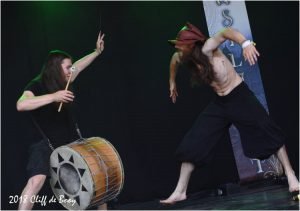 But I shouldn’t focus too much on Koen alone. All play an important part on this CD. Just listen to the percussion and slidgeridoo on The Heron. The song wouldn’t have the impact it has, if it wasn’t for the rhythm section behind it, setting the tone in the intro. Same goes for The Hobgoblin’s Gift or The Goblin’s Pogo. The percussion in those songs is so important, they wouldn’t work without it.
But I shouldn’t focus too much on Koen alone. All play an important part on this CD. Just listen to the percussion and slidgeridoo on The Heron. The song wouldn’t have the impact it has, if it wasn’t for the rhythm section behind it, setting the tone in the intro. Same goes for The Hobgoblin’s Gift or The Goblin’s Pogo. The percussion in those songs is so important, they wouldn’t work without it. Now what more can I tell about Through The Veil? I could tell about the good vibes it spreads. Play Seedling, Roots, the Goblin’s Pogo or The Hobgoblin’s gift and I guarantee you an instant smile. Or I could mention the tender part of SeeD, the songs Winter, Lullaby and The Heron are beautiful examples of strong powerful pagan folk ballads. Now I could go on and on but I won’t . Bottom line is: SeeD made a strong pagan folk CD with Through The Veil. One that I can highly recommend, with a huge smile on my face!
Cliff
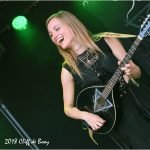 PS: After proofreading the review Koen told me that 10 of the 13 goblin voices were done by Robin Dekker. Robin kept coming up with new goblin voices he could do, and then would rush back behind the microphone to do yet another one. Koen also confirmed that the fujara flute solo in The Heron was indeed an improvisation. ‘The heron was actually 90% written ánd improvised on the day of the recording’ Koen told me. Two lovely behind the scenes ‘fun facts’ I didn’t want to keep to myself.
PS: After proofreading the review Koen told me that 10 of the 13 goblin voices were done by Robin Dekker. Robin kept coming up with new goblin voices he could do, and then would rush back behind the microphone to do yet another one. Koen also confirmed that the fujara flute solo in The Heron was indeed an improvisation. ‘The heron was actually 90% written ánd improvised on the day of the recording’ Koen told me. Two lovely behind the scenes ‘fun facts’ I didn’t want to keep to myself.
– Text editor: Diane
– Sleeve art design: Robin Dekker
– Photo of SeeD in Spain by SeeD pagan folk.
– All other pictures taken at Castlefest by Cliff de Booy
